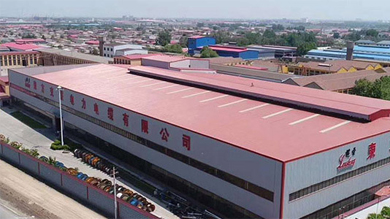Nov . 06, 2024 10:52 Back to list
Di Wafer Butterfly Valve Specifications and Applications for Efficient Fluid Control
Understanding Di Wafer Type Butterfly Valves A Comprehensive Overview
Butterfly valves are increasingly becoming popular in various industries due to their efficient design and reliable performance. Among the many types available, the di wafer type butterfly valve has emerged as a preferred choice for many applications. This article aims to provide an overview of the di wafer type butterfly valve, exploring its design, functionality, advantages, and typical applications.
What is a Di Wafer Type Butterfly Valve?
A di wafer type butterfly valve is a quarter-turn valve that consists of a circular disc or plate which rotates around a shaft. The design of the valve allows it to regulate the flow of fluid through various piping systems. The term wafer refers to the design's configuration, which is installed between two flanges in a pipeline, providing a compact and lightweight solution compared to other valve types.
Design and Components
The construction of a di wafer type butterfly valve involves several key components
1. Body The body of the valve is usually made from durable materials such as cast iron, stainless steel, or plastic. The choice of material depends on the specific application and the type of fluid being controlled.
2. Disc The disc is the critical component that controls the flow. When the valve is closed, the disc fits snugly against the seat, preventing flow. When the valve is opened, the disc rotates, allowing fluid to pass through.
3. Shaft The shaft connects the disc to the actuator. Its design ensures smooth rotation and can be configured for manual or automated operation.
4. Seat The seat provides a sealing surface for the disc, helping to maintain tight closure. Various materials are used for seats to enhance sealing capabilities and withstand different temperatures and pressures.
5. Actuator Depending on the application, the actuator can be manual, electric, or pneumatic. The actuator dictates how quickly and efficiently the valve can open or close.
Functionality
The operation of a di wafer type butterfly valve is straightforward. When the actuator is engaged, it causes the shaft to rotate. This rotation positions the disc at an angle to the flow, either allowing or restricting fluid passage. Due to its quarter-turn operation, the di wafer type butterfly valve can be opened or closed rapidly, making it suitable for processes that require quick adjustments.
di wafer type butterfly valve

When closed, the disc sits tightly against the seat, minimizing leakage and ensuring a secure seal. The ability to regulate flow with minimal resistance when the valve is fully open makes the di wafer type butterfly valve an energy-efficient option. This feature is particularly beneficial in systems where pressure drop and energy loss are primary concerns.
Advantages of Di Wafer Type Butterfly Valves
1. Space-saving Design The wafer style allows for installation between two flanges, eliminating the need for additional space that conventional valves might require. This is especially advantageous in cramped installations.
2. Lightweight Compared to traditional valve types, di wafer type butterfly valves are lighter, often leading to lower shipping and handling costs.
3. Versatility They can be used in various applications, from water systems to chemical processing, due to their functionality across different media types.
4. Cost-effective The lower manufacturing costs and ease of installation translate to overall savings for consumers, making them an attractive option for budget-conscious projects.
5. Quick Operation The quarter-turn operation allows for rapid opening and closing, increasing efficiency in fluid control processes.
Applications
Di wafer type butterfly valves find their utility in numerous industries, including
- Water Supply and Treatment Used in water pipelines for controlling flow and pressure. - HVAC Systems Applied in heating and cooling systems to regulate air and water flow. - Chemical Processing Employed for managing various chemicals in processing plants, ensuring safety and reliability. - Food and Beverage Industry Used for fluid control without contamination due to the smooth operation and clean design materials.
Conclusion
In conclusion, the di wafer type butterfly valve is a crucial component in modern fluid control systems. With its combination of efficiency, flexibility, and cost-effectiveness, it is not surprising that it continues to gain popularity across various industries. Understanding the design, functionality, and applications of these valves can help industries optimize their processes and ensure reliable operation in their fluid handling systems.
Share
-
Reliable Wafer Type Butterfly Valves for Every IndustryNewsJul.25,2025
-
Reliable Flow Control Begins with the Right Ball Check ValveNewsJul.25,2025
-
Precision Flow Control Starts with Quality ValvesNewsJul.25,2025
-
Industrial Flow Control ReliabilityNewsJul.25,2025
-
Engineered for Efficiency Gate Valves That Power Industrial PerformanceNewsJul.25,2025
-
Empowering Infrastructure Through Quality ManufacturingNewsJul.25,2025